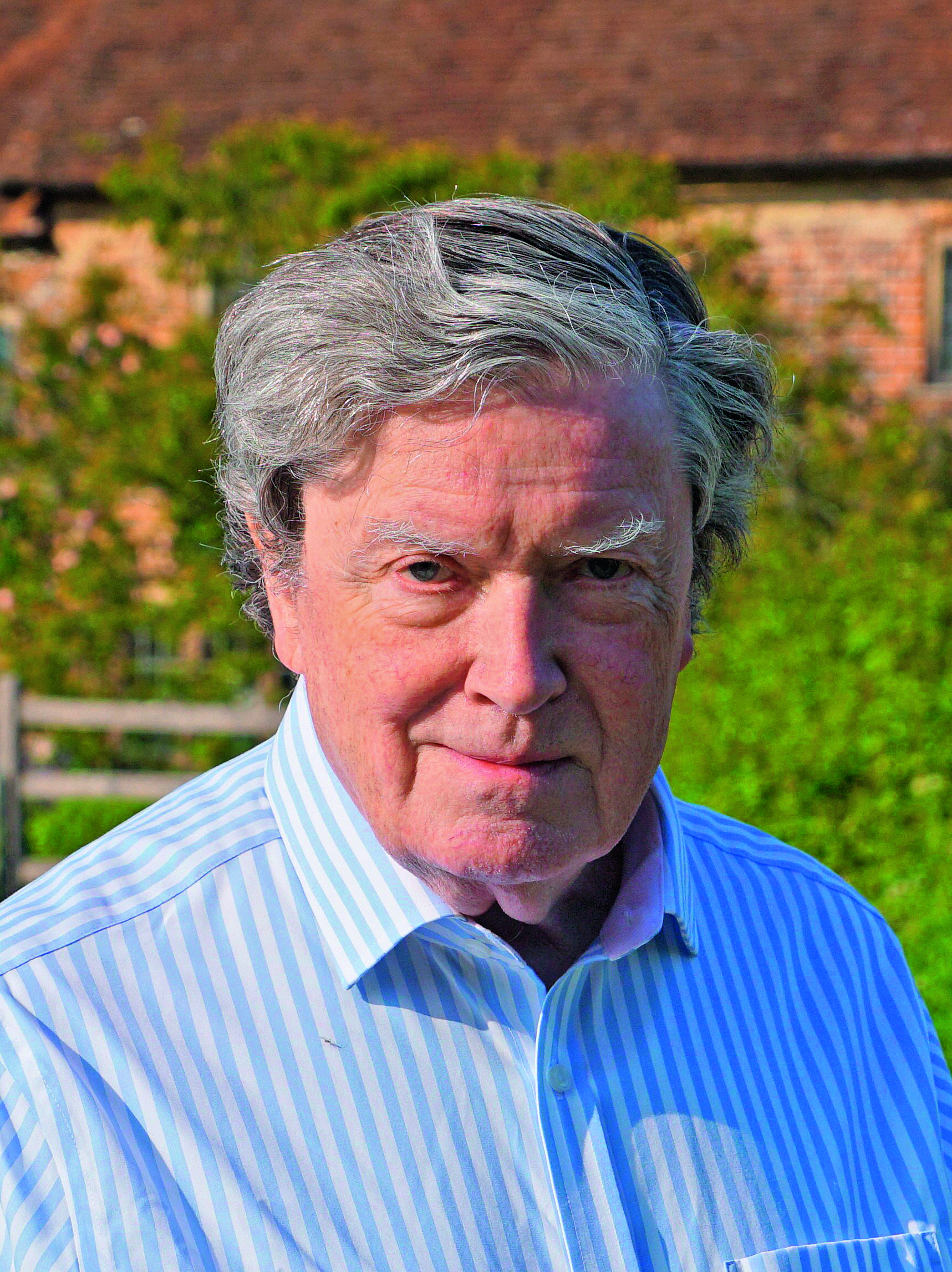How Harper Beckham created the perfect gardener's birthday present for her father's 50th — with a little help from David Austin Roses
When Harper Beckham wanted to commission a rose for her father’s birthday, there was only one man for the job, says Charles Quest-Ritson, as he takes a closer look at the science behind creating a new David Austin bloom.
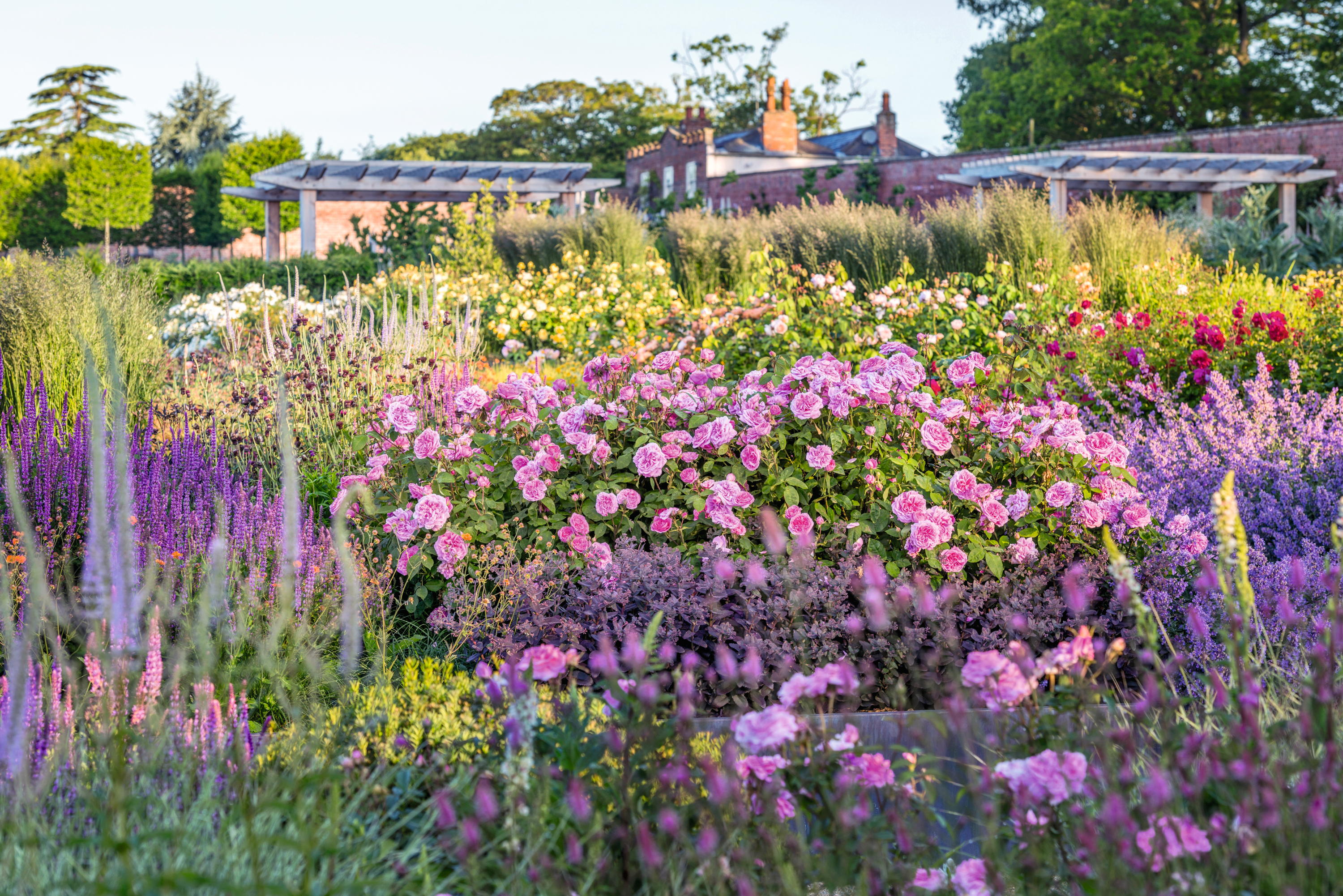
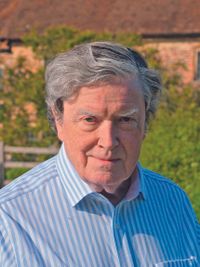
Early in 2025, Harper Beckham wanted to give a special present to her father to celebrate his 50th birthday. Fourteen-year-old Harper had no hesitation: nothing could be better than a beautiful, white, scented rose, bred by the great David Austin. The new, hitherto unnamed variety was chosen and 10 large flowerpots containing bushes in full bloom were delivered in time for David Beckham’s birthday celebrations on May 2. We do not know exactly how the choice was made, but sports editors point out that white is the colour of the English football shirt.
Every new rose that comes from a well-known breeder such as David Austin has its own story, which begins with the process of choosing its parents. This is a job for cold winter days, when little else can be done in a rose nursery. It is by studying the ancestry of existing roses, and their own performance as parents, that the creation of a new rose is planned. Each parent will have several characteristics, which, it is hoped, will combine to produce offspring that represent an improvement on both of them.
In spring, when the first roses flower in the glasshouses at David Austin Roses, the chosen parents must be prepared for hybridisation. Almost all roses can be used as the pollen- or seed-bearing parent, but nothing is left to chance. The nursery keeps substantial stocks of pollen from the roses that will be used for pollination, so it is available to their expert breeders throughout the season. The seed-bearing parent, however, is a flower borne on a living rosebush that is brought into the glasshouse in readiness for hybridisation.
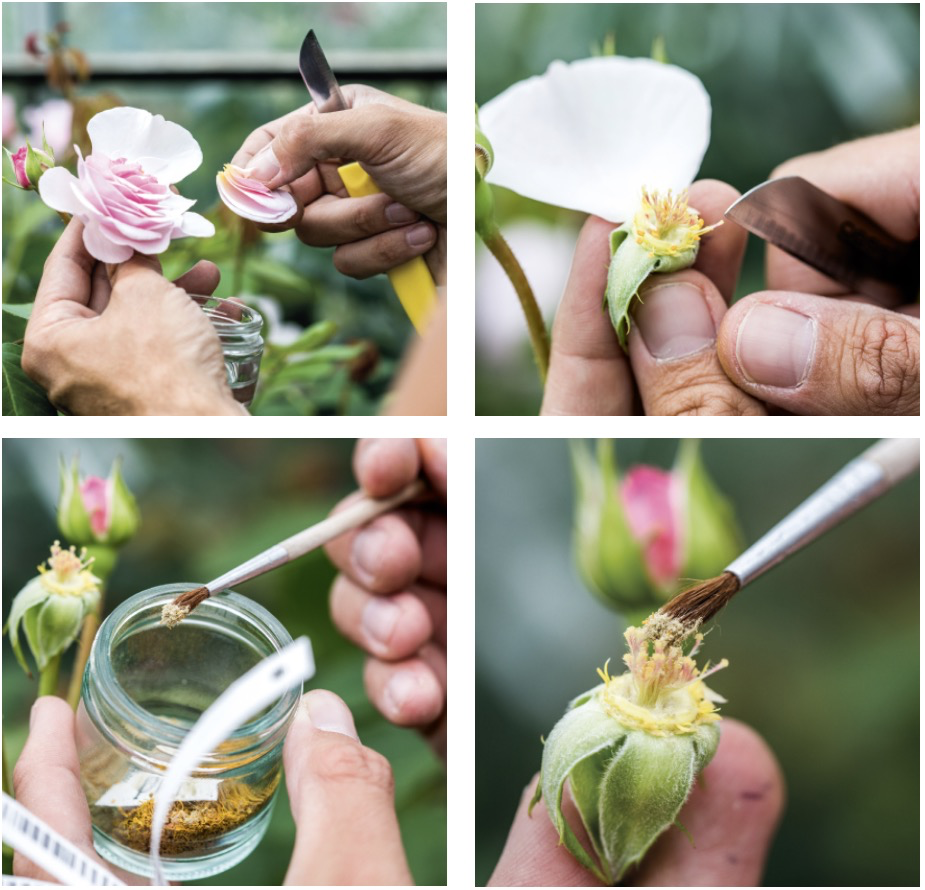
A steady hand is vital for the painstaking process of pollination.
A bud is chosen, just before it opens out, and its petals and the pollen-bearing stamens are cut off, to avoid any chance of self-pollination. This leaves only the stigma showing — the female part of the flower, the task of which is to accept the pollen of the other chosen parent. In the wild, this is accomplished naturally by insect visitors such as bees, but, under the controlled conditions of deliberate plant-breeding, the pollen of the chosen male parent is applied on the end of a very fine paintbrush. The pollen will travel down the stigma to fertilise the seeds in the ovary. The little green hip — known to botanists as the receptacle — will then swell up over several months as seeds begin to develop inside it.
By early autumn, the rose hip is ripe — large, round, orange in colour and full of hard little seeds. Those seeds are prised out of the hip and stored for at least two months in cool, damp conditions. This is known as stratification, imitating the effect of cold weather to break the built-in dormancy of rose seeds — their natural inability to germinate until conditions are propitious. In late winter, the seeds are sown in trays of compost in a warm glasshouse and, after germinating, the seedlings are pricked out in well-prepared beds, also safely under glass.
The new plants grow quickly, so many will produce their first flowers early in May. This marks the start of the long period of observation that will see all but a handful of the seedlings discarded because they represent no advance on the qualities displayed by existing rose varieties. ‘Each rose starts as a hope,’ enthuses David Austin Jnr. ‘Being part of its journey is always an honour.’
"The whole process requires 10 to 12 years of continual assessment, whereby the duds are weeded out and the ‘possibles’ are bulked up"
The story of how a variety is created applies to the new rose that will be launched in 2026 at the RHS Chelsea Flower Show, bearing the name Sir David Beckham (Ausa34b16). Its origin dates back to spring 2012, when David Austin Roses made the cross that gave birth to the original seedling, no more than 6in high, from which all the many thousands of plants of Sir David Beckham have successively been propagated. Think back to that time — Harper was a baby, less than one year old, and her father was playing an important role in the organisation and launch of the 2012 London Olympics, when British athletes won more medals than in any Games since 1908.
Exquisite houses, the beauty of Nature, and how to get the most from your life, straight to your inbox.
Back then, Austin Snr was in his mid eighties, with more than 50 years’ experience of planning the genealogies of his new roses. The exact parentage of the Beckham rose will remain a trade secret for some years yet, but we can assume it includes at least one well-established Austin rose, to be certain of passing on the distinctive qualities for which the propagator’s English roses are famous, such as shapely blooms and strong scent. We have also been told that its more distant ancestors include a number of exceptional varieties, such as Heritage (Ausblush, introduced in 1984) and Leander (Auslea, dating to 1982), stretching right back to the famous Constance Spry (Ausfirst) rose, first introduced in 1960, which has proved a rich source of shapely, scented beauties for more than 60 years.
As soon as the future Sir David Beckham flowered for the first time, its promise was recognised by Mr Austin and his colleagues. The buds on its little stem were taken for propagation, to see how well the resultant plants performed in years of testing. The criteria that it needed to satisfy included health, shape, scent, vigour and frequency of flowering.
At this stage, in 2012, it was not the only seedling that showed promise. In most years, the team of eight or 10 hybridising experts at David Austin Roses can expect to raise about 350,000 seeds, but only about 150,000 will germinate and grow away with confidence, even in the ideal conditions of the one acre of glasshouses.
From that 150,000, some 5,000 will be marked as worth progressing to the next stage, when they are propagated and monitored for their performance as superior garden roses. Two years’ later, their number will be reduced to about 150 hopefuls, then to perhaps 30 and, finally, to a mere handful from which only the best will be considered worthy of commercial introduction.
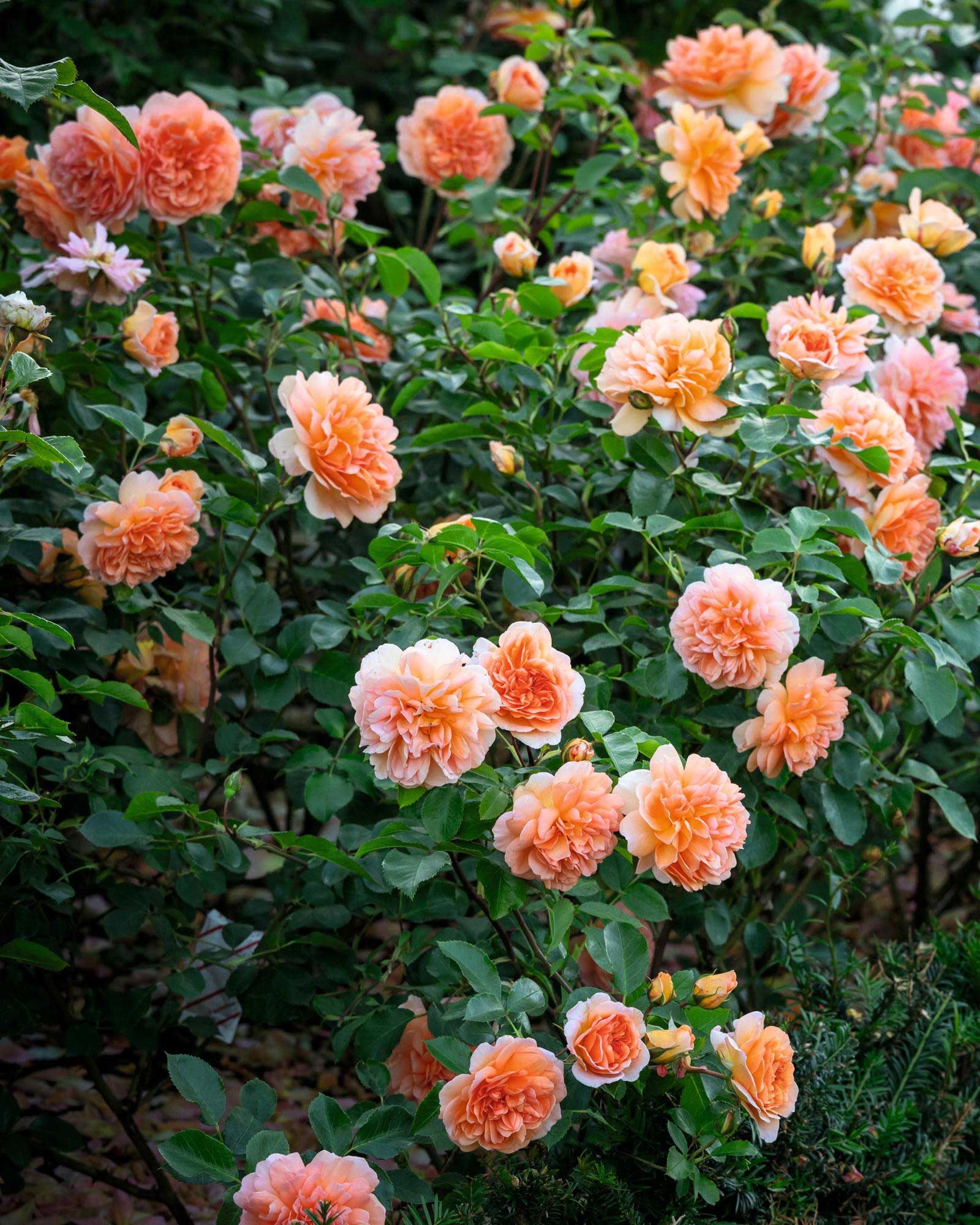
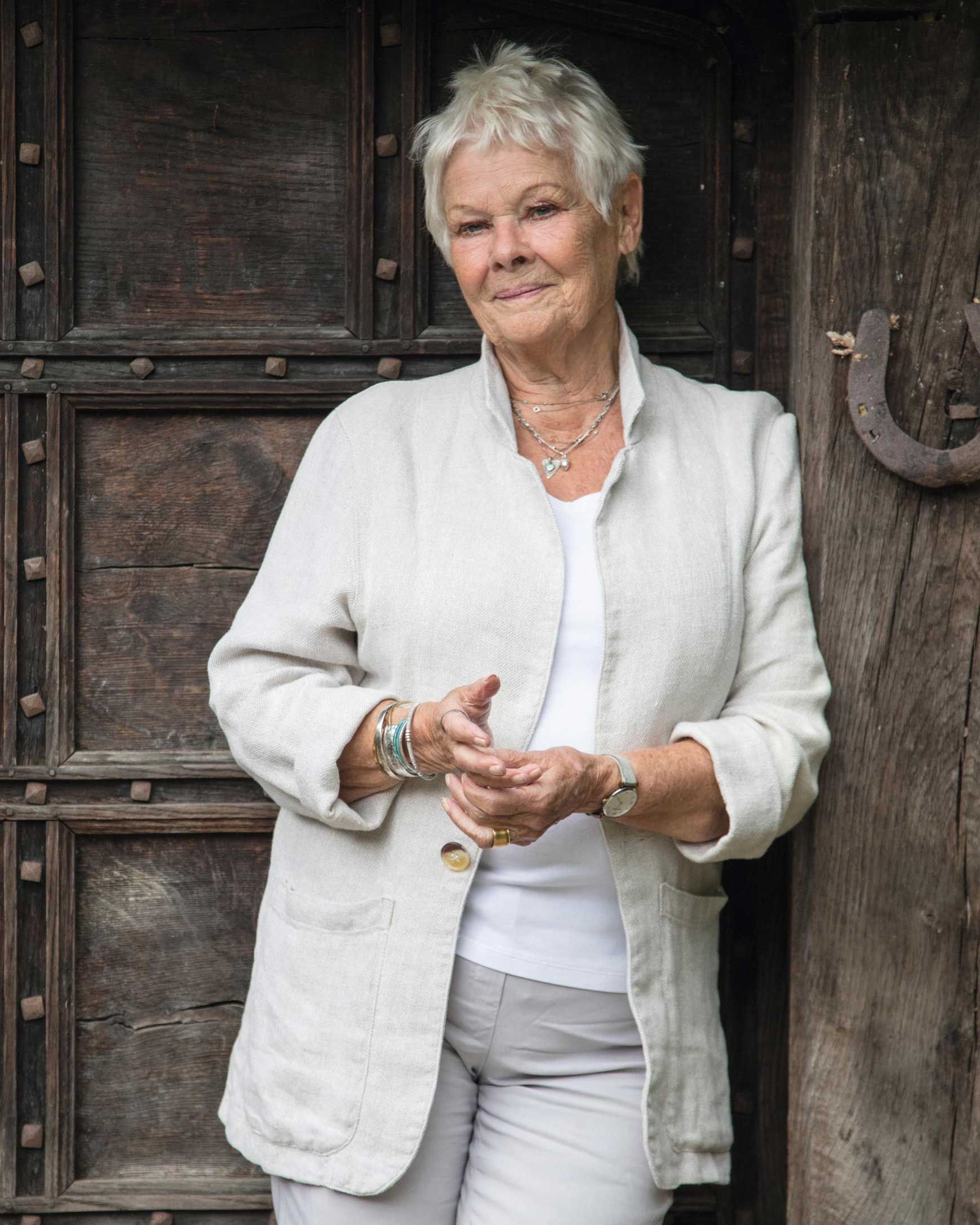
The whole process requires 10 to 12 years of continual assessment, whereby the duds are weeded out and the ‘possibles’ are bulked up — propagating large numbers — so that thousands of mature plants are ready for sale to back up the launch. David Austin Roses has nearly 70 acres of land dedicated to these trials, where each year’s crop of hopeful new seedling roses is assessed through to the moment when it is clear which of them, perhaps only one or two of the original 150,000, will definitely be worth taking to market.
The crucial activity throughout these long years of trialling is the process of whittling down the selection. Teams of experts inspect the roses continually, noting when they flower, how generous they are in producing blooms, what sort of shape and vigour the plants and their flowers exhibit, whether they are susceptible to disease (which triggers an instant death sentence) and how they stand up to rain, frost, drought, wind and heat. They also consider their potential as parents in future hybridising programmes, comparing each individual plant with its parents and noting the family traits that seem to be dominant.
This is the journey from which Sir David Beckham has emerged triumphant. The rose has been assessed for the quality of its flowers, its speed of re-flowering, the shape of the bush and, above all, its freedom from disease — good health is the supreme requirement in all new roses nowadays. It is the only new rose that David Austin Roses will launch at next year’s RHS Chelsea Flower Show and money from the sale of each plant will go towards The King’s Foundation.
What does it look like? It makes a shapely bush, rounded, but upright, some 3ft or 4ft in height, if not pruned too hard — gentle, shapely pruning is a rule of good cultivation that Austin always championed. It carries great quantities of medium-size, white, semi-double flowers, with a sweet, musky scent. They open out wide from palest apricot buds and have a pretty display of yellow stamens at their centre.
The flowers are borne in a long-lasting cluster of 15–20, but those clusters may be larger when it flowers for the second time in autumn. Pollinators love them. These flowers have an important characteristic that many people do not appreciate — they shed their petals when they start to fade, so they never remain on the bush to turn brown or mushy. The flowers are set off by dark-green leaves and held on a bush that is easy to cultivate.
Connoisseurs say that its dark leaves and the shape of its flowers remind them of Desdemona (Auskindling), another of David Austin’s English Roses, dating back to 2015, but Sir David Beckham has more flowers in its clusters. It can also be distinguished by its more sturdy, upright growth and the way its flowers eventually reflex to reveal the stamens. We know that it has the famous Floribunda — properly a Hybrid Musk — called Iceberg in its ancestry, because this super-floriferous white rose was one of the grandparents of Heritage, back in the 1980s.
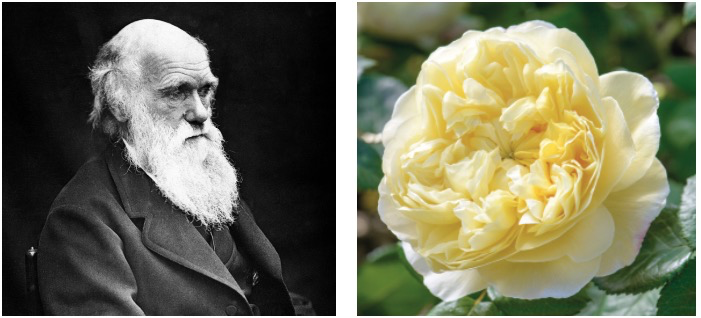
A product of David Austin’s evolution, Charles Darwin’s rose is full and softly yellow.
Miss Beckham’s rose will prove a popular garden plant, combining the ‘David Austin shape’ with highly prized white colouring. Good white roses are not easy to breed — the colour is genetically recessive to pink, yellow and red — so, for many years, the best white English roses were sports of existing pink ones. Winchester Cathedral (Auscat), for example, was introduced in 1988 as a mutation of the popular pink rose Mary Rose (Ausmary, 1983) and, despite being unstable — it frequently reverts to pink — it has only recently been retired from the list of roses that David Austin Roses offers. The future of white roses, currently so fashionable, now seems assured by the introduction of Sir David Beckham alongside Desdemona.
Although its namesake is widely known, there yet may be rose-lovers all over the world who do not recognise him and will plant Sir David Beckham in their gardens for its sheer beauty and ease of cultivation. Rose gardens, especially those that include heritage roses, are full of varieties that commemorate worthy individuals famous at the time of their introduction. The best-known crimson rose, from the 19th century, is called Général Jacqueminot — but who was he? Most of us have forgotten. The same may even be true one day of Sir David Beckham — ‘who was he?’ is the question people may ask in 200 years’ time. They will know and love the rose that bears his name, but his renown today may have faded. Even his daughter’s part in the story may be forgotten — how she wanted a truly special rose to commemorate his 50th birthday.
This feature originally appeared in the October 22, 2025 issue of Country Life. Click here for more information on how to subscribe.
Charles Quest-Ritson is a historian and writer about plants and gardens. His books include The English Garden: A Social History; Gardens of Europe; and Ninfa: The Most Romantic Garden in the World. He is a great enthusiast for roses — he wrote the RHS Encyclopedia of Roses jointly with his wife Brigid and spent five years writing his definitive Climbing Roses of the World (descriptions of 1,6oo varieties!). Food is another passion: he was the first Englishman to qualify as an olive oil taster in accordance with EU norms. He has lectured in five languages and in all six continents except Antarctica, where he missed his chance when his son-in-law was Governor of the Falkland Islands.
-
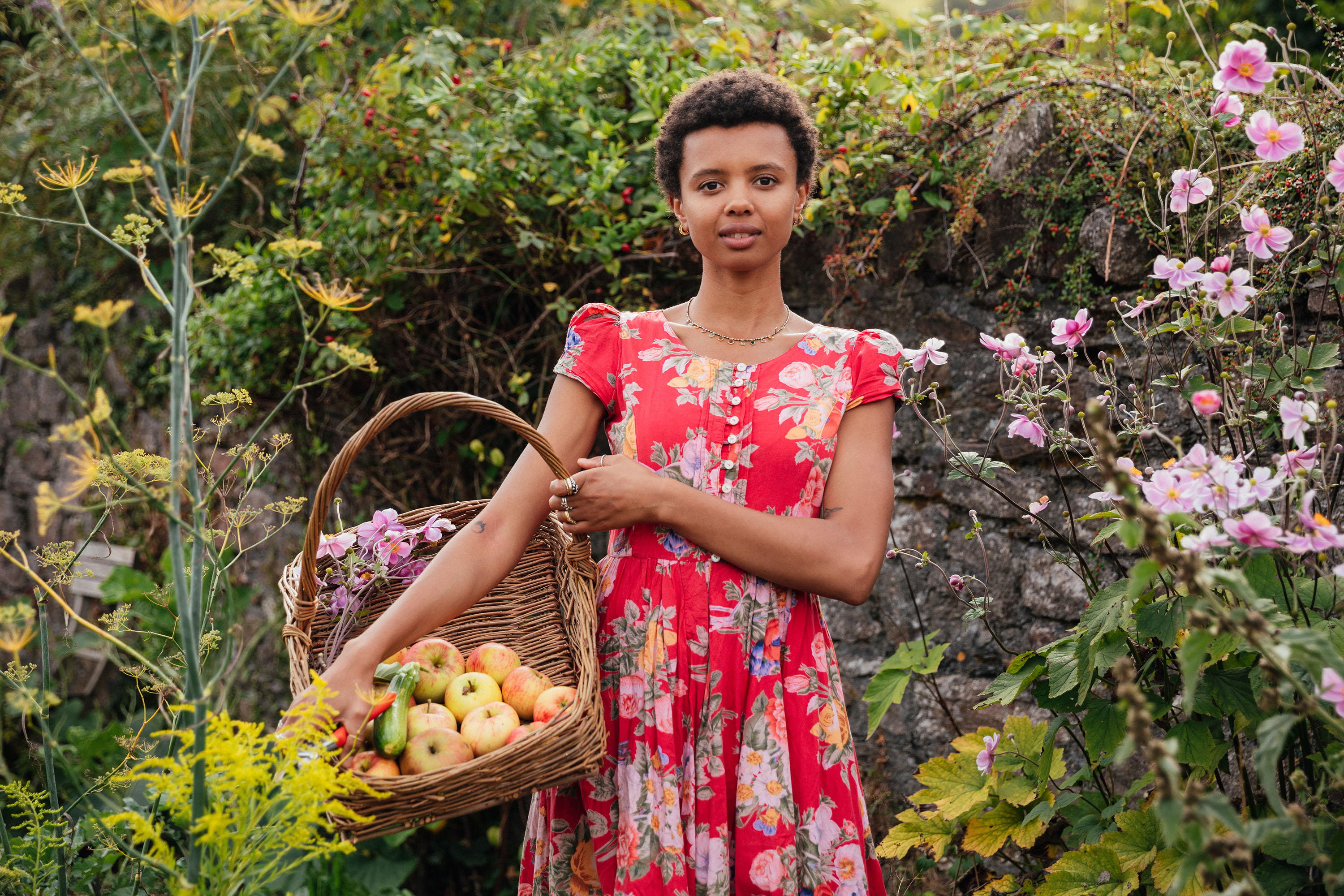 Poppy Okotcha, the model turned gardener who is one of David Beckham's countryside champions
Poppy Okotcha, the model turned gardener who is one of David Beckham's countryside championsPoppy Okotcha, the 29-year-old ecological community grower, garden content creator, author — and also one of David Beckham's countryside champions — speaks to Julie Harding.
-
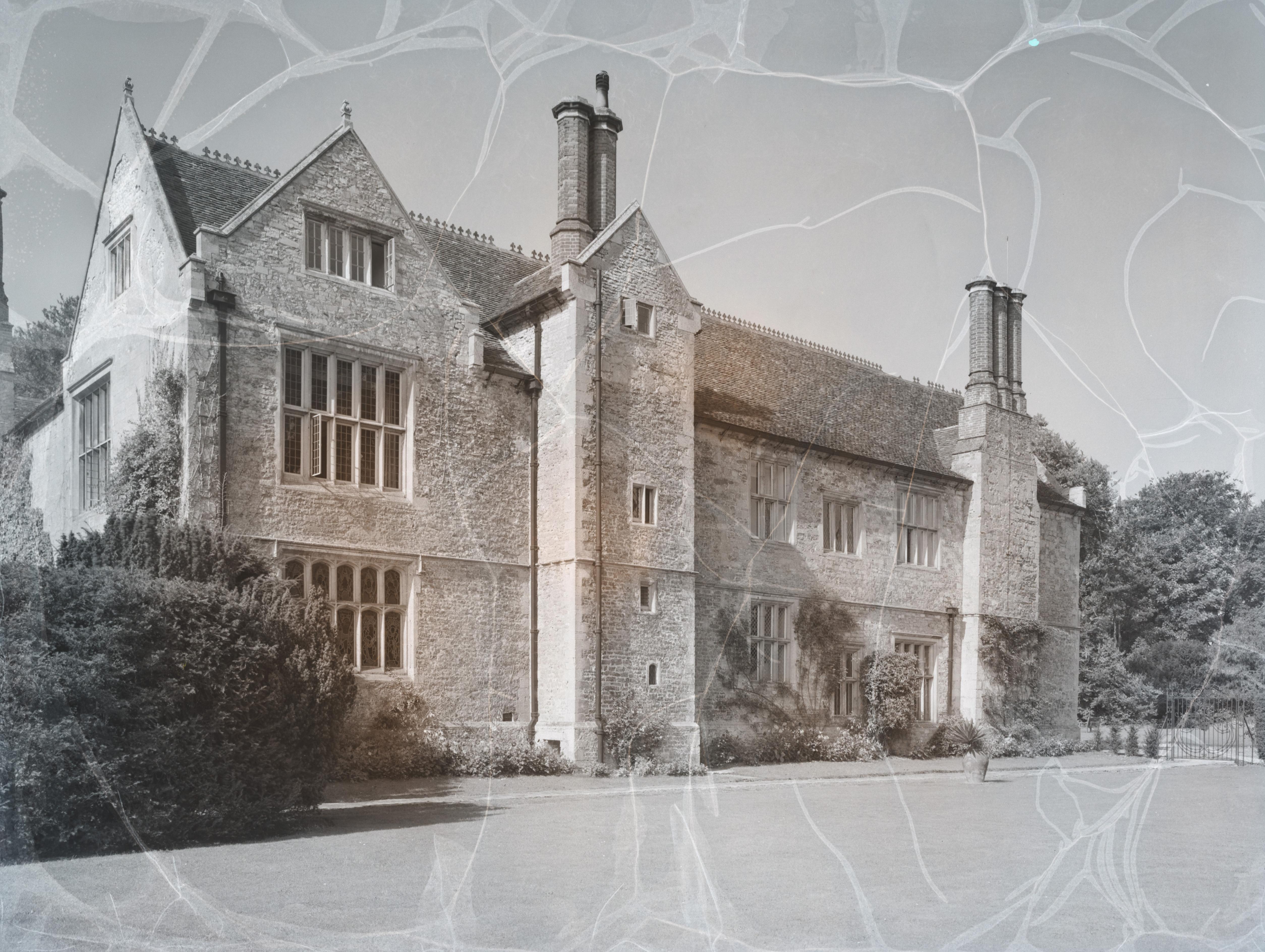 The mysterious case of Country Life's cursed photographs and other spooky stories from our archive
The mysterious case of Country Life's cursed photographs and other spooky stories from our archiveMelanie Bryan delves goes in search of the spookiest stories in the Country Life Archive.
-
 Poppy Okotcha, the model turned gardener who is one of David Beckham's countryside champions
Poppy Okotcha, the model turned gardener who is one of David Beckham's countryside championsPoppy Okotcha, the 29-year-old ecological community grower, garden content creator, author — and also one of David Beckham's countryside champions — speaks to Julie Harding.
-
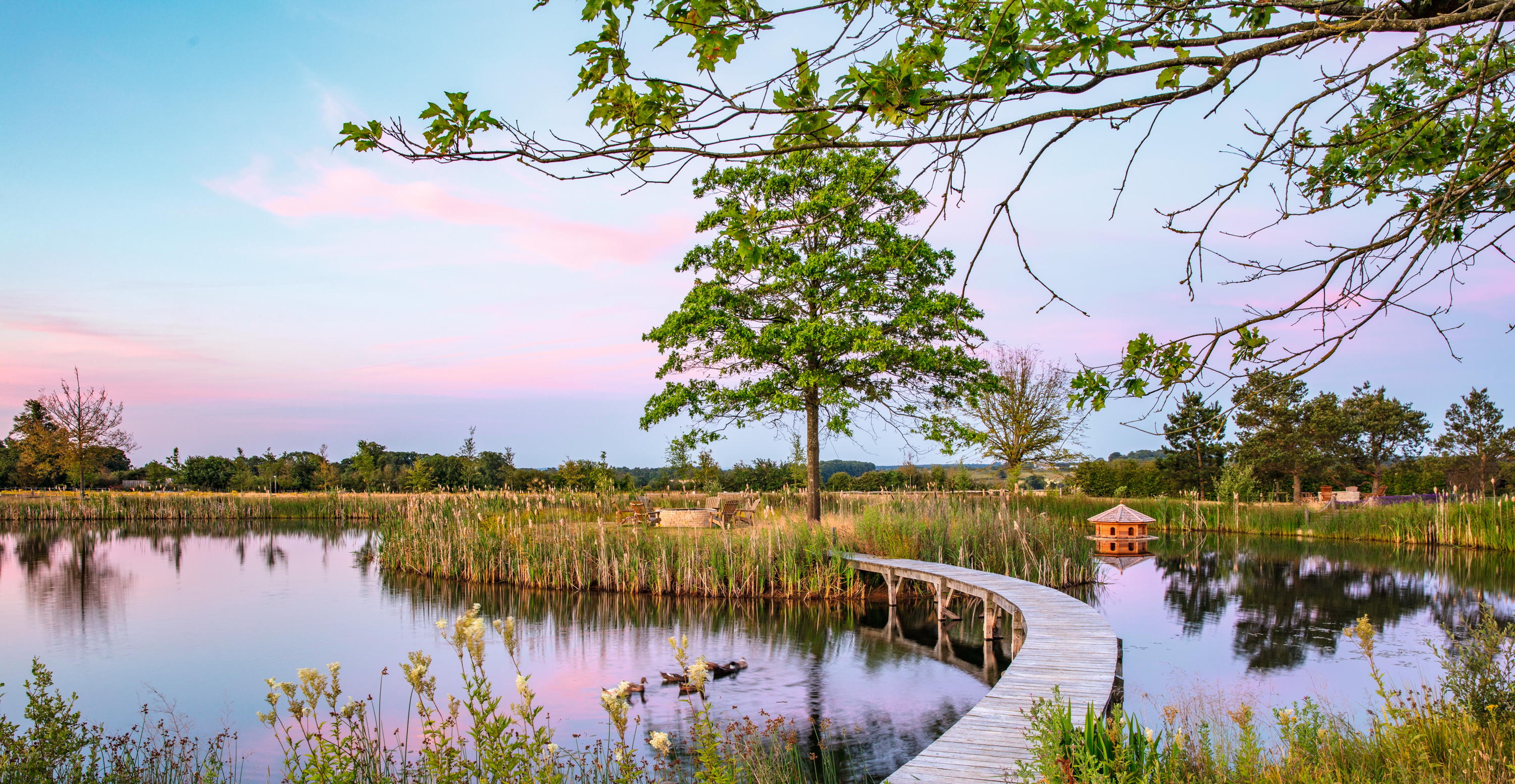 'I bought it without telling Victoria. She didn’t want another project... I sat her down, gave her a vodka and tonic and told her what I’d done': David Beckham tells Alan Titchmarsh about his Cotswolds home and garden
'I bought it without telling Victoria. She didn’t want another project... I sat her down, gave her a vodka and tonic and told her what I’d done': David Beckham tells Alan Titchmarsh about his Cotswolds home and gardenOn an open and windswept tract of land in Oxfordshire, where once stood some derelict barns and a lone maple tree, our guest editor Sir David Beckham has created a haven for his family and his honeybees. Photographs by Clive Nichols and Millie Pilkington.
-
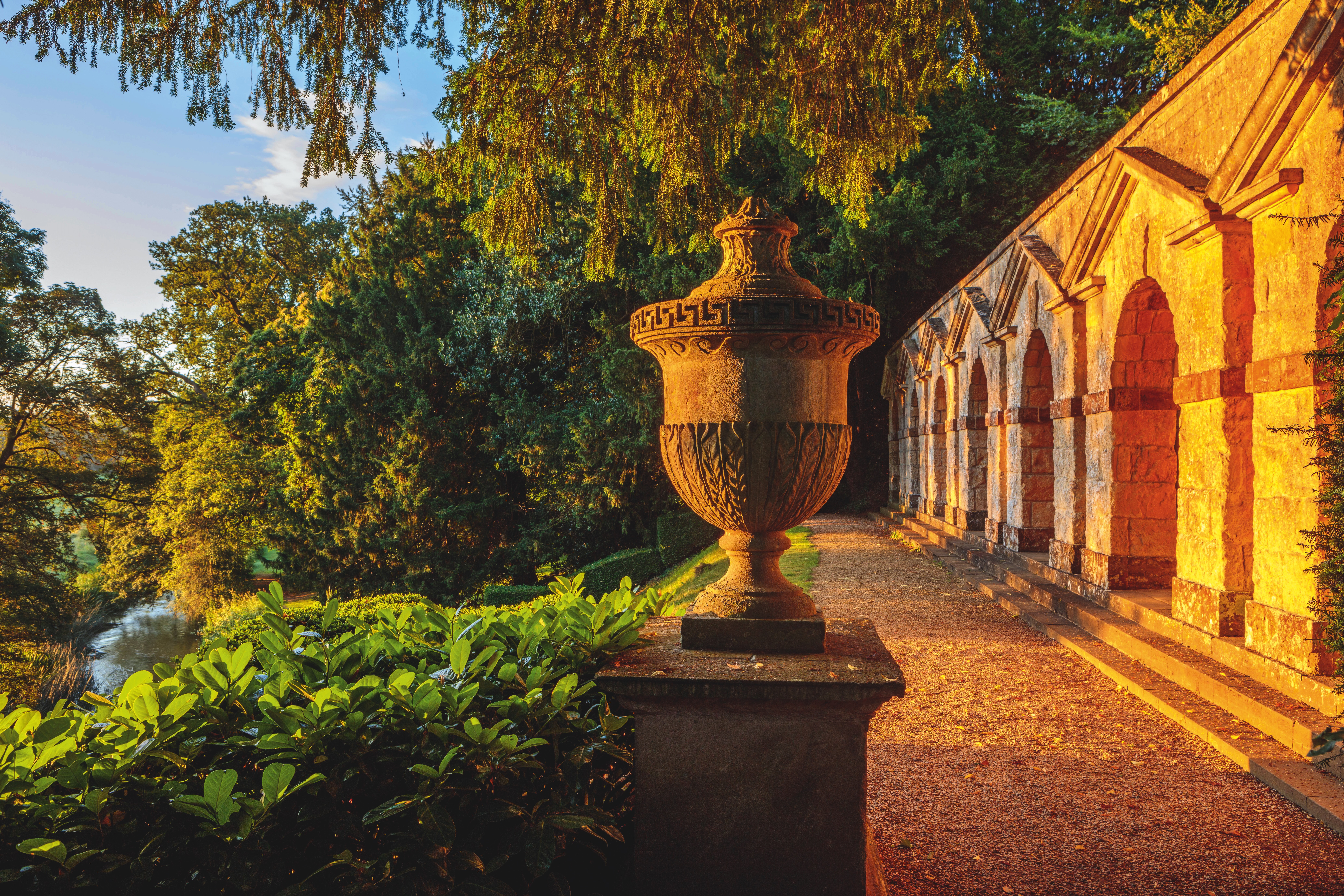 'One of the truly great gardens of the world' is at risk of having its vistas and tranquility blighted forever
'One of the truly great gardens of the world' is at risk of having its vistas and tranquility blighted foreverThe views from Rousham, the birthplace of the English landscape-garden movement are at risk of development plans for the nearby former RAF Upper Heyford Air Force base get the go-ahead.
-
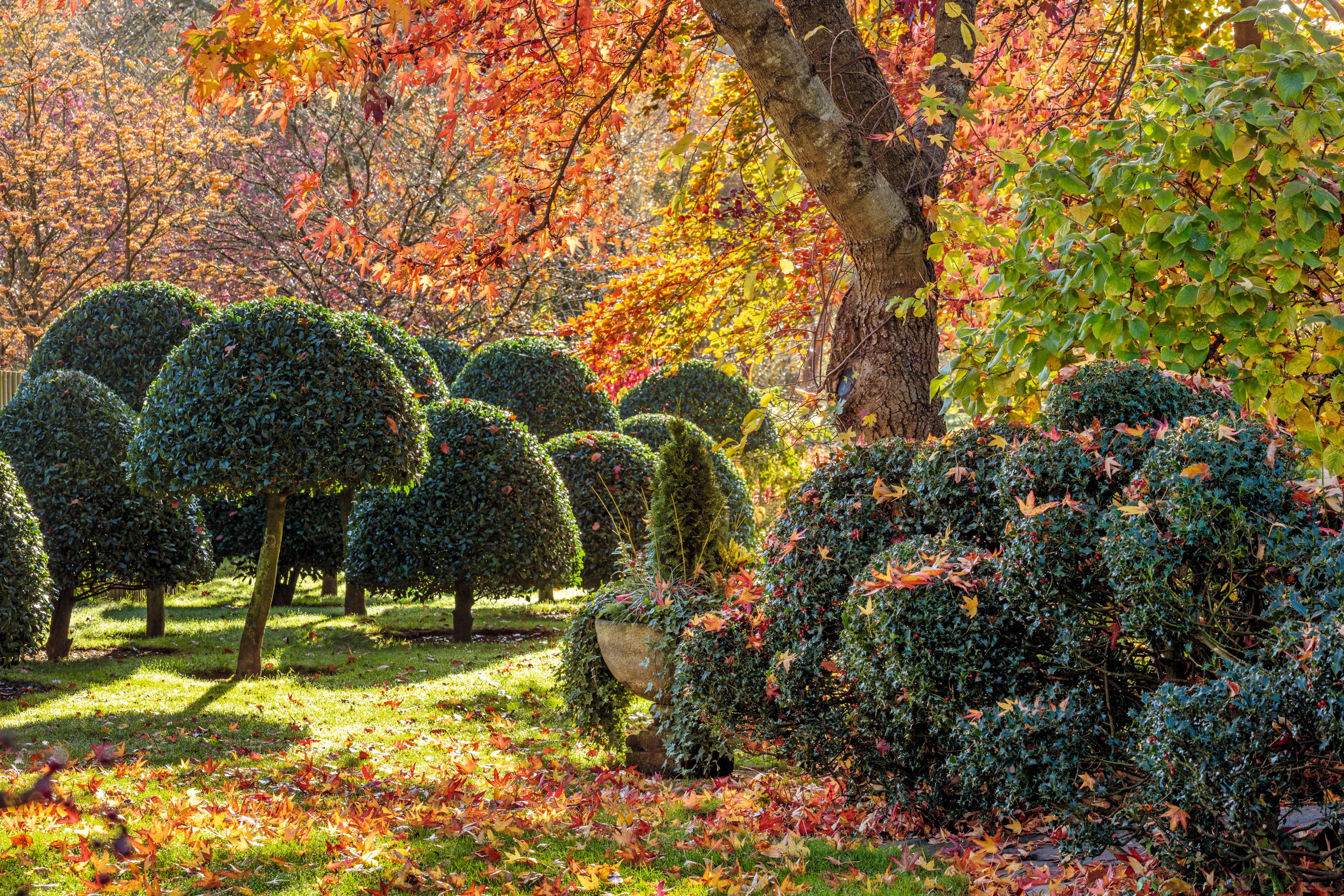 'You could walk round it every day and always notice something new': A private tour of the garden of multiple Chelsea gold medallist John Massey
'You could walk round it every day and always notice something new': A private tour of the garden of multiple Chelsea gold medallist John MasseyInspired by his friends Christopher Lloyd and Princess Greta Sturdza, nurseryman and plant breeder John Massey has made a garden in Worcestershire that never ceases to delight, writes Charles Quest-Ritson. Photographs by Clive Nichols
-
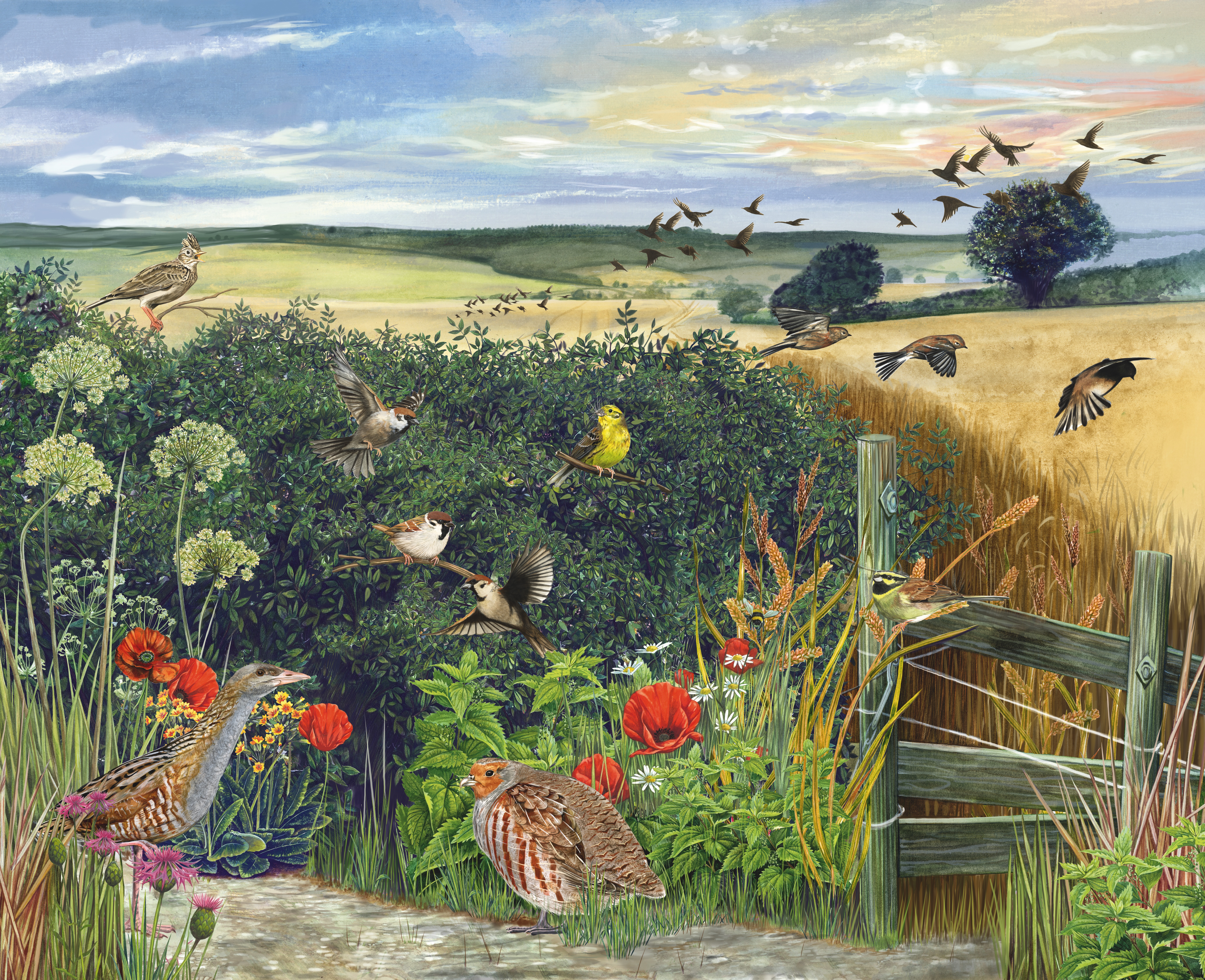 Alan Titchmarsh: 15 years ago we planted a hedge — today, it's 10ft tall, 6ft deep and a joy throughout the year. Here's how we did it
Alan Titchmarsh: 15 years ago we planted a hedge — today, it's 10ft tall, 6ft deep and a joy throughout the year. Here's how we did it15 years ago, Alan Titchmarsh planted a hedge; today, it's 10ft tall, 6ft deep, he and his wife absolutely love it, 'and so do all the creatures with whom we share our garden.'
-
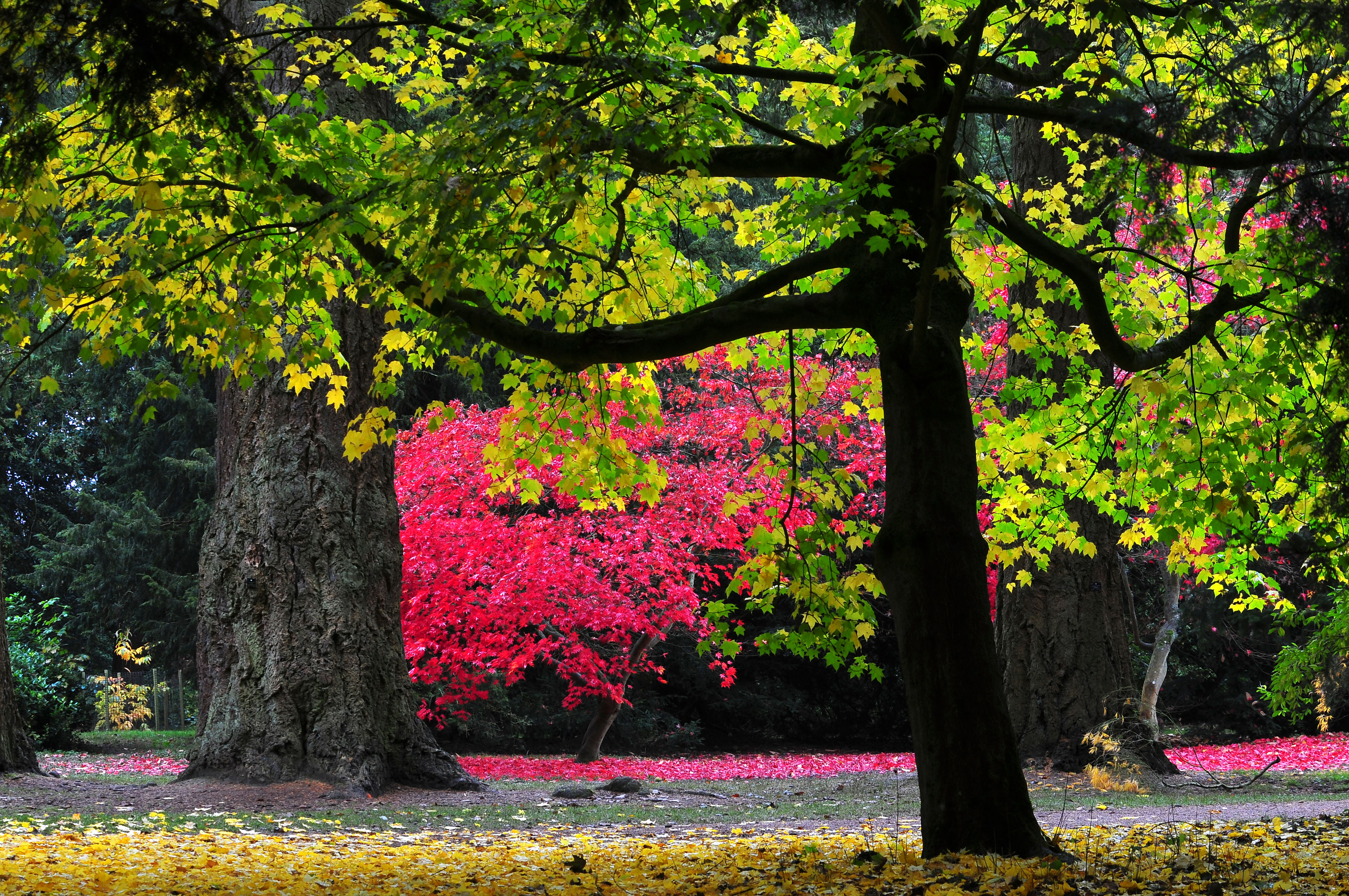 The one website about trees and shrubs that everyone needs to know about
The one website about trees and shrubs that everyone needs to know about'Trees and Shrubs Hardy in the British Isles' has been digitised, making one of gardening's most important works free and at your fingertips.
-
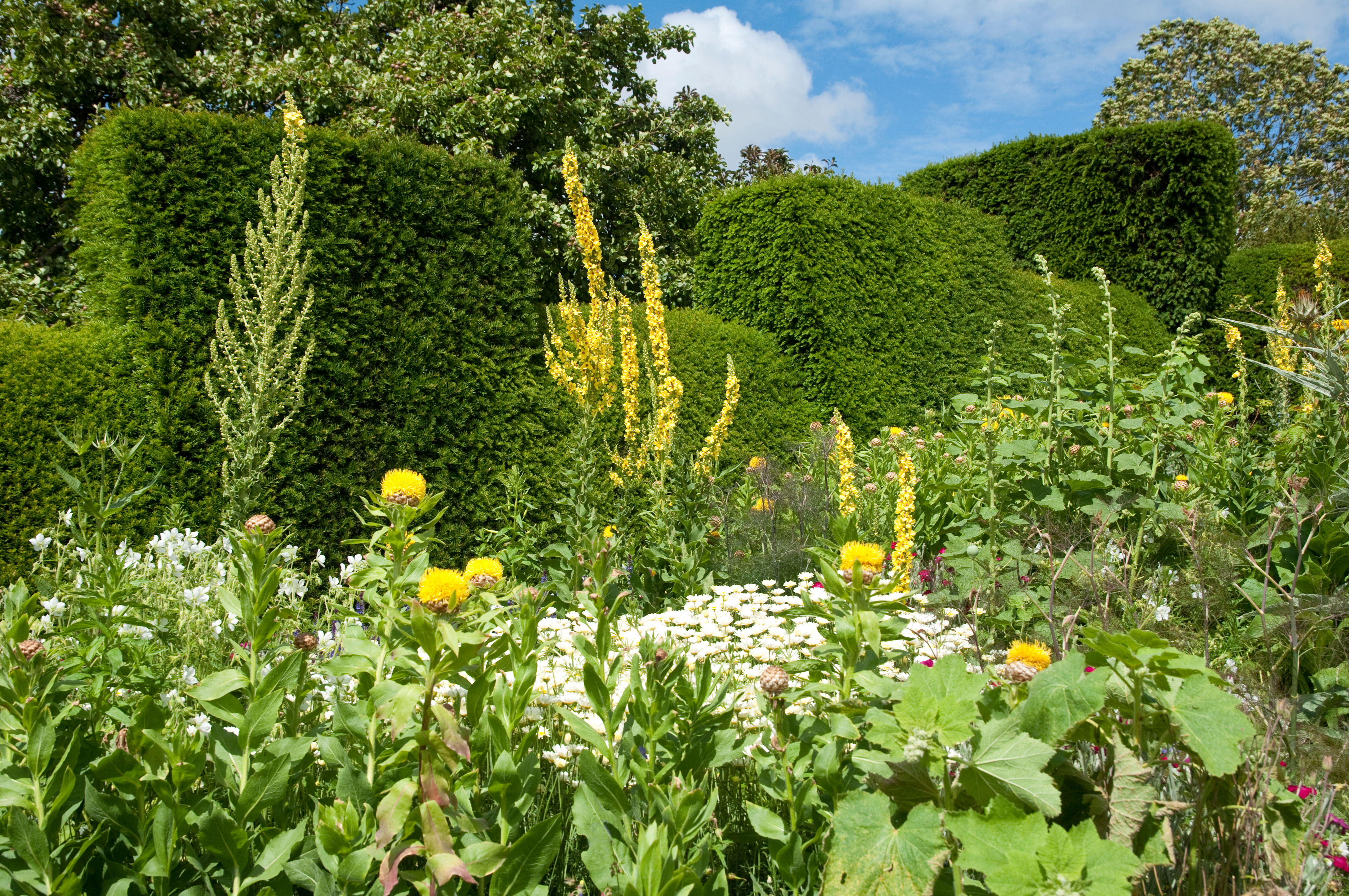 'Nature's loo roll': Verbascum, one of the most curious — and useful — plants you'll find in an English country garden
'Nature's loo roll': Verbascum, one of the most curious — and useful — plants you'll find in an English country gardenWith its ability to rouge cheeks, settle stomachs and operate as Nature’s loo roll, verbascum is as surprisingly useful as it is pretty, discovers Ian Morton.
-
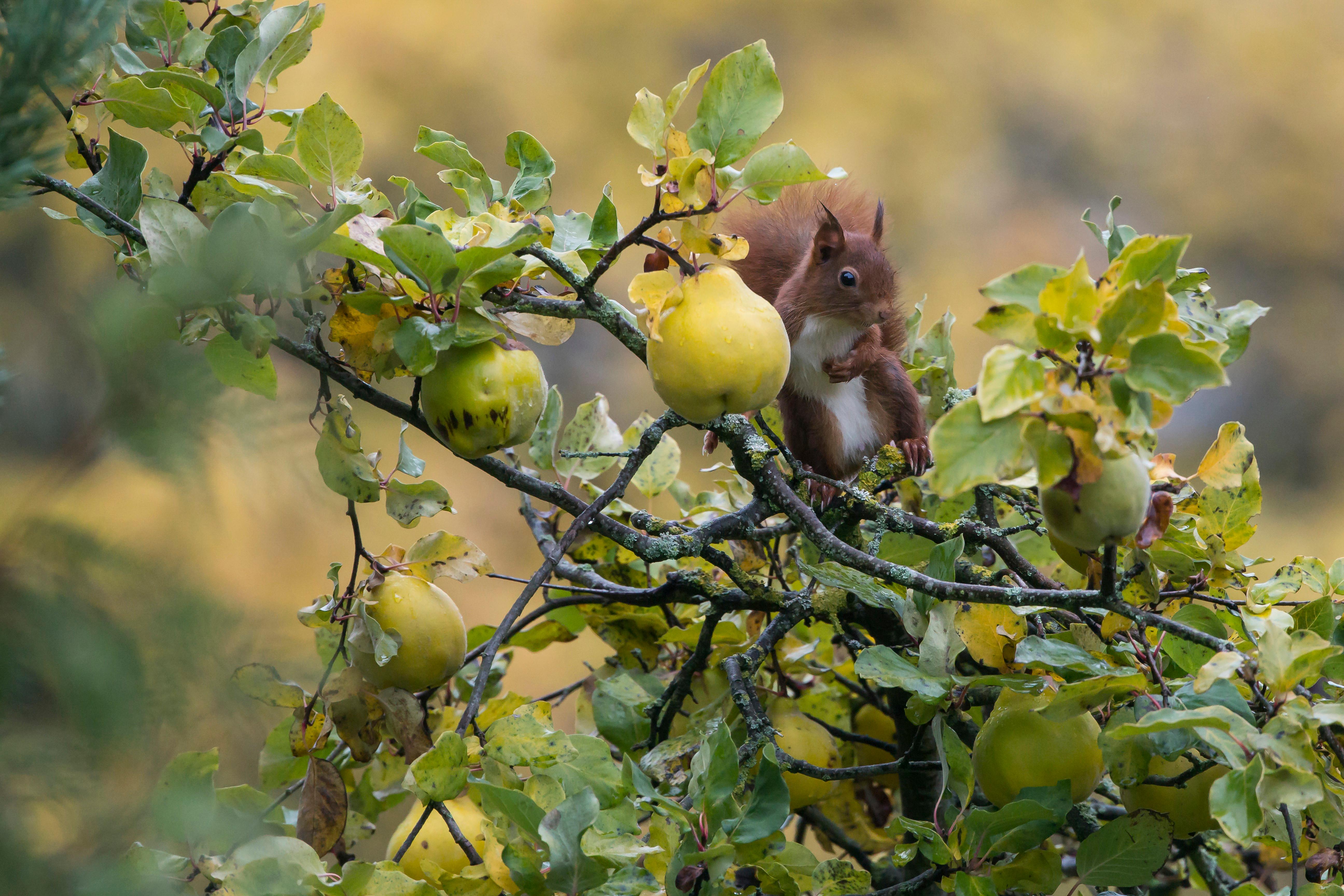 'There is only a handful of fruit trees I’d grow for their non-edible charms — quince is one'
'There is only a handful of fruit trees I’d grow for their non-edible charms — quince is one'A versatile fruit that's superb in jams and with booze, quince also doesn't make you work too hard for all that pleasure.
